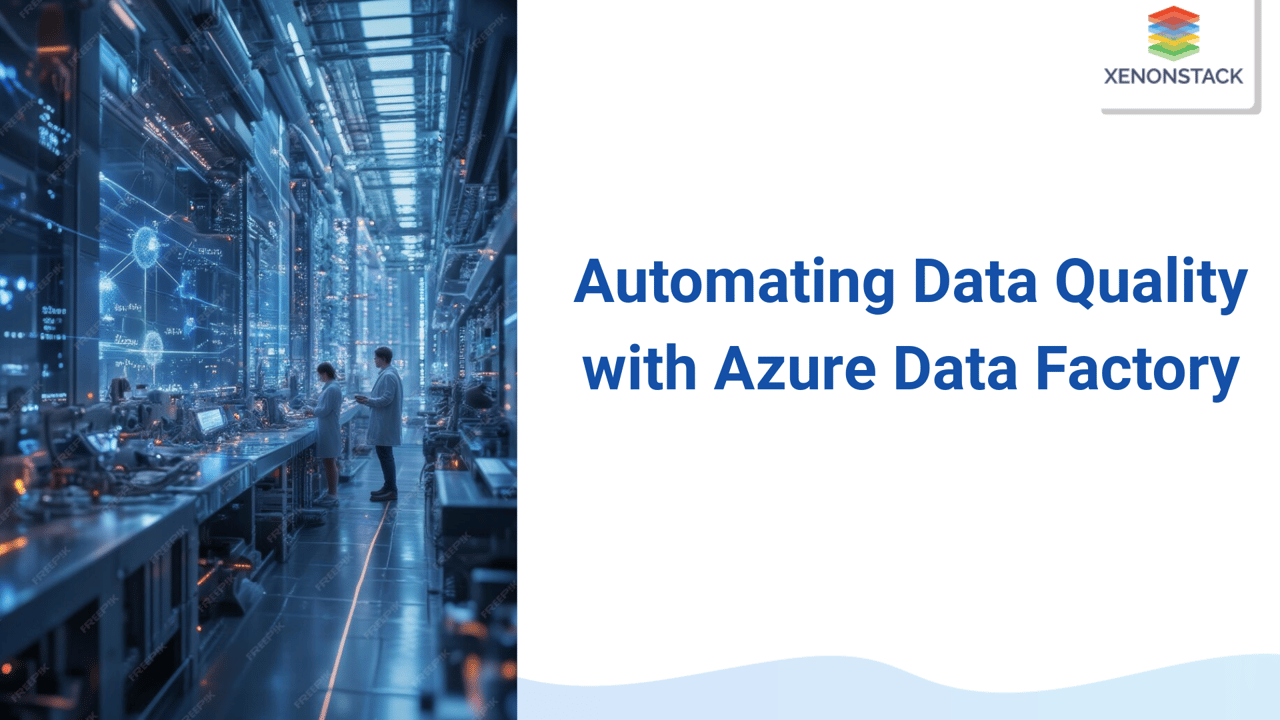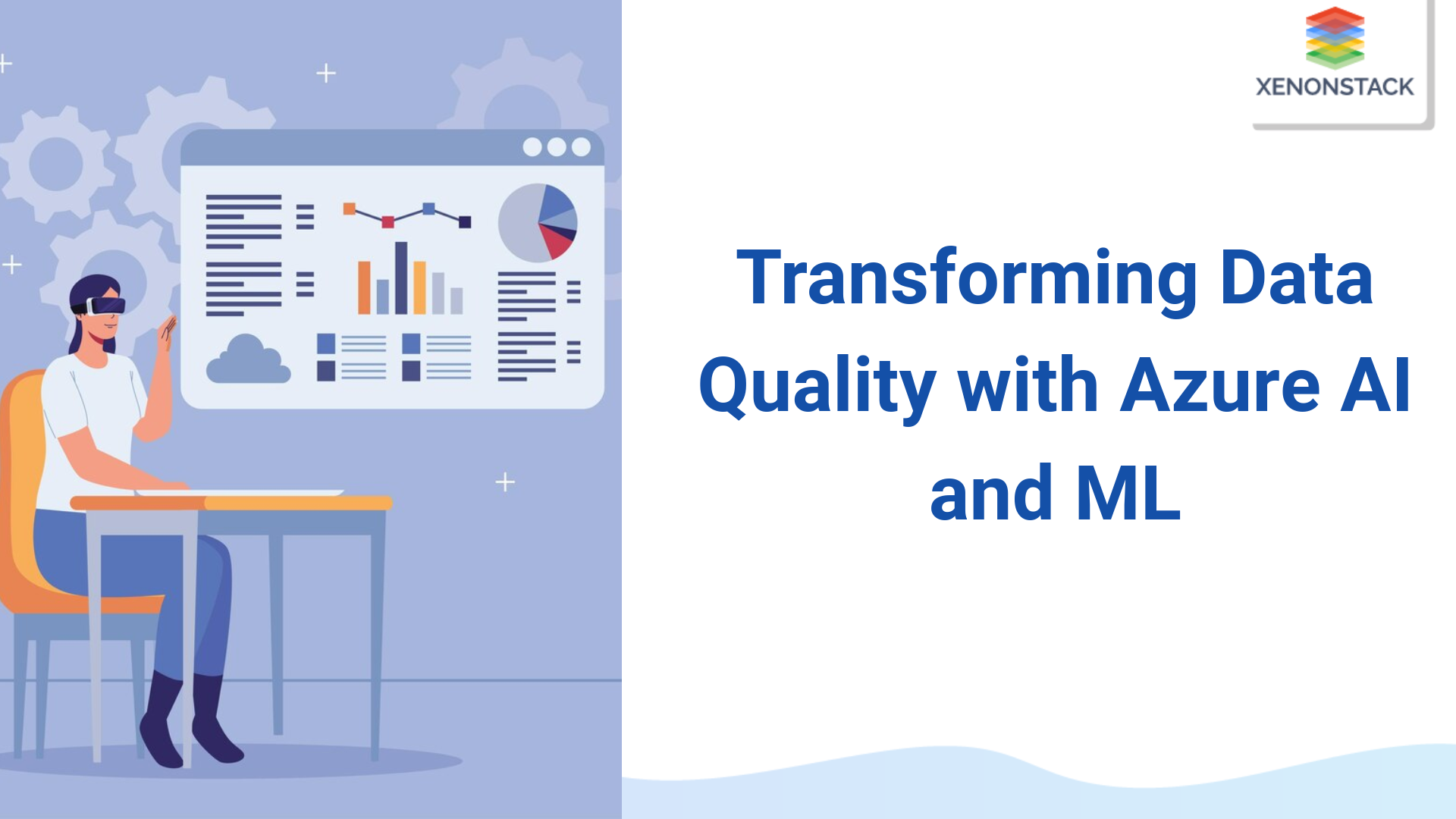
In the modern business environment, data is not just a set of numbers—it forms the foundation of sound decision-making. However, the true challenge is ensuring the data is accurate, complete, and dependable. Many businesses still depend on manual processes to manage data quality, which can be time-consuming and prone to errors. This is where Microsoft Azure Data Factory (ADF) plays a key role in automating and optimising the process.
It provides a powerful way to automate data quality workflows, reducing effort and improving accuracy. In this post, I'll dive into how ADF can streamline your data processes, share real-world lessons from my experience as a data engineer, and offer practical tips for implementing automated data quality solutions in your organization.
What is Data Quality Management?
Before diving into the automation aspect, it’s essential to understand what data quality means. Data quality refers to your data's accuracy, consistency, reliability, and completeness. Whether you’re a data engineer, data scientist, or data analyst, you know that decisions are only as good as the data behind them. Poor data quality can lead to misguided strategies, opportunities, and financial loss.

Fig 1: Data Quality Process
Traditionally, many organizations have relied on manual processes to clean, validate, and transform data. While this approach may work on a smaller scale, it often leads to inconsistencies and delays as data volumes grow. Manual interventions are also vulnerable to human error, which can compromise the integrity of your data. Automating these processes mitigates these risks and frees your team to focus on higher-level analysis and innovation.
Why Data Quality is Critical for Modern Businesses
Imagine making key business decisions based on data riddled with errors or inconsistencies. Whether forecasting market trends, optimizing operations, or personalizing customer experiences, poor data quality can lead to misguided strategies, lost revenue, and damaged reputations. In my seven years of experience as a data engineer and AI specialist, I've seen firsthand how even a tiny lapse in data quality can have cascading effects on business outcomes.
Data quality encompasses more than just clean datasets, ensuring your information's reliability, completeness, and timeliness. When organisations invest in data quality, they invest in a foundation that supports accurate analytics, efficient operations, and insightful decision-making. Automation plays a critical role here by reducing manual intervention, mitigating human error, and ensuring that data quality processes keep pace with the ever-increasing volume and variety of data.
Microsoft Azure Data Factory Tutorial
Microsoft Azure Data Factory is a cloud-based data integration service designed to create, schedule, and orchestrate data workflows. Think of it as a highly adaptable and scalable pipeline that can move data between various storage systems, transform it along the way, and ensure that quality checks are an inherent part of the process.
One of the standout features of ADF is its ability to integrate with a wide range of data sources, from on-premises databases to cloud-based data lakes and everything in between. This versatility makes it an ideal tool for enterprises that manage diverse datasets. With ADF, you can design workflows that automatically ingest data, apply transformations, and perform quality validations without manual intervention.

Fig 2: Microsoft Azure Data Factory Core Computing Capabilities
The diagram illustrates Azure Data Factory's complete data pipeline workflow, showcasing four core capabilities (Ingest, Prepare, Transform & Analyse, Publish) that connect various data sources to consumption endpoints through a centralised processing architecture.
How Microsoft Azure Revolutionizes Data Quality Management
Microsoft Azure has evolved into one of the most comprehensive cloud platforms, offering tools and services that cater to the entire data lifecycle. From data ingestion and storage to processing and analytics, Azure's ecosystem is designed to seamlessly integrate various components to deliver a holistic approach to data management.
What sets Azure apart is its commitment to integrating advanced AI capabilities into every layer of its ecosystem. Whether dealing with data cleansing, anomaly detection, or real-time monitoring, Azure's AI-driven services empower you to automate complex processes that traditionally require significant manual effort. This integration enhances data quality and accelerates the speed at which data can be processed and analyzed.
In practical terms, leveraging Azure means accessing a platform where machine learning models and intelligent algorithms are embedded into core data services. Data management and AI convergence enable organisations to proactively identify and resolve data quality issues before they impact business decisions.
Automating Data Quality Workflows: Step-by-step
Overview
Imagine a scenario where your organization receives data from multiple sources: customer information from CRM systems, transactional data from sales platforms, and even unstructured data from social media channels. Ensuring that each dataset meets your quality standards can become daunting without automation.

Fig 3: Data Quality Workflow
Implementing a robust data quality framework involves several key components, each pivotal in ensuring that data is reliable and actionable. Let's explore these components and understand how they come together in an end-to-end automation strategy on Azure.
Data Ingestion
The journey toward high-quality data starts with how you bring information into your system. Data ingestion involves collecting data from structured, semi-structured, or unstructured sources. Azure provides various tools to handle this complexity, ensuring that data is seamlessly ingested from disparate sources such as on-premises systems, cloud applications, and IoT devices.
An automated ingestion process minimizes manual data transfers and reduces the likelihood of errors. By leveraging Azure's native connectors and integration services, organizations can ensure that data enters the pipeline standardised and consistently.
Data Profiling and Cleansing
Once data is ingested, the next step is to assess its quality. Data profiling involves examining datasets to understand their structure, completeness, and accuracy. This is where Azure's AI capabilities shine. Automated data profiling tools can detect anomalies, missing values, and inconsistencies, providing insights into the overall health of the data.
Following profiling, the cleansing process kicks in. Data cleansing involves correcting errors, filling in missing values, and ensuring consistency across datasets. With the power of machine learning, Azure can learn from historical data patterns to intelligently suggest and even implement data cleansing measures. This not only speeds up the remediation process but also enhances the overall reliability of your data.
Data Integration
In many organizations, data resides in silos—spread across different departments or systems. Data integration is the process of combining these disparate sources into a unified view. Azure's ecosystem supports seamless integration, allowing you to aggregate data from various sources into a single, cohesive repository.
This integration is critical for creating a "single source of truth," where all data is standardized and readily available for analysis. Automated integration workflows ensure that data from different systems is consistently transformed and aligned, reducing the risk of discrepancies and enabling more accurate analytics.
Data Monitoring and Governance
Data quality isn't a one-time achievement; it's an ongoing commitment. Continuous monitoring is essential to ensure data remains accurate and relevant. Azure's monitoring tools, enhanced by AI-driven analytics, continuously track data quality metrics and alert teams to potential issues in real-time.
Governance is another critical aspect of data quality. Establishing policies, procedures, and standards for data management ensures that data remains compliant with internal and regulatory requirements. With Azure's comprehensive governance tools, organizations can automate compliance checks and maintain an audit trail of all data-related activities.
Implementation Guide: Azure Data Factory Best Practices
Based on my years of experience in data engineering, I’ve seen that successful automation is not just about choosing the right tool—it’s also about the approach you take. Here are some best practices to consider when using Azure Data Factory to automate your data quality workflows:
Start by mapping out your data flows and identifying key quality metrics critical for your business. This planning phase should involve stakeholders from various departments who will consider all perspectives. A clear understanding of data dependencies and business requirements lays the groundwork for a smooth implementation.
Instead of attempting to automate your entire data pipeline in one go, consider a phased approach. Begin with a pilot project focused on a specific segment of your data. This allows you to test and refine your workflows before scaling up across the entire enterprise.
Effective monitoring is essential for catching issues early. Leverage ADF’s built-in logging features to create dashboards that provide visibility into your data workflows. This continuous monitoring helps you maintain data quality over time and quickly address anomalies.
Automating workflows does not eliminate the need for testing. Regularly validate your automated processes to ensure they meet your quality standards. This involves both computerised testing during the development phase and periodic manual reviews to verify the accuracy of the outputs.
Data quality automation must complement robust governance. Define clear policies and access controls to ensure data is handled securely and complies with industry regulations. This is particularly important when dealing with sensitive or proprietary information.
Using Predictive Analytics for Proactive Quality Control
One of the most exciting aspects of AI in data quality is its ability to predict potential issues before they occur. Machine learning models can use historical data to forecast trends and flag anomalies that may lead to quality degradation. This predictive approach allows organizations to address issues before they escalate, ensuring that data remains clean and reliable.
-
Intelligent Anomaly Detection
Traditional data quality processes often rely on predefined rules to detect errors. However, this method can fall short in dynamic environments where data patterns continuously evolve. Azure's AI-driven anomaly detection goes beyond static rules by learning normal data behaviour and identifying deviations that might indicate errors or fraud. This level of intelligence improves accuracy and reduces the time needed to identify and resolve issues.
-
Automated Data Cleansing and Remediation
Manual data cleansing is both time-consuming and prone to human error. By leveraging AI, Azure can automate much of the cleansing process. For example, machine learning models can automatically identify and correct inconsistencies, standardise formats, and even predict missing values based on historical trends. This level of automation ensures that data quality is maintained with minimal human intervention, freeing up valuable resources for more strategic initiatives.
Azure Data Factory Case Studies and Success Stories
In one of my previous roles at a multinational retail organization, we faced a significant challenge: consolidating data from over 20 regional databases into a unified system. Each regional branch recorded customer interactions, inventory levels, and sales data. Manual cleaning and merging of this data was slow and prone to inconsistencies that affected our reporting accuracy.
We implemented Microsoft Azure Data Factory to automate the data quality workflow. The first step was establishing standardized data quality rules, which were then embedded into our ADF pipelines. The automation process involved:
-
Automated Data Ingestion: We set up ADF to pull data from each regional database regularly, ensuring that our central repository was always current.
-
Data Transformation: ADF automatically normalized the data formats, aligned naming conventions, and filtered out records that did not meet our quality criteria.
-
Continuous Quality Checks: We were immediately alerted to any deviations from our quality standards by integrating data validation steps within the pipeline.
The result was a dramatic improvement in data consistency and a significant reduction in manual intervention. This led to faster reporting cycles and boosted the confidence of our business stakeholders in the insights generated from our data. This experience underscored the value of combining a powerful tool like Azure Data Factory with a well-thought-out strategy for data quality management.
Another example is a healthcare provider aiming to integrate patient data from various sources, including electronic health records (EHRs), lab results, and insurance claims. The diversity of data types and formats posed a considerable challenge. The organisation ensured that all incoming data adhered to strict quality standards by deploying ADF to automate its data pipelines. This automation improved operational efficiency and played a crucial role in enhancing patient care by providing healthcare professionals with reliable, up-to-date information.
These real-world examples highlight that while the path to automation may come with challenges—such as the initial setup and the need for continual monitoring—the long-term benefits in data quality and operational efficiency are well worth the effort of Azure Serverless Computing.
Troubleshooting Azure Data Factory
While Azure Data Factory provides a robust framework for automating data quality workflows, it's essential to acknowledge that no system is without its challenges. Some common obstacles include:
- Integration Complexities: Enterprises often deal with various data sources, each with its unique format and structure. Integrating these sources into a cohesive workflow requires careful planning and sometimes creative problem-solving.
- Scalability Concerns: As your data volumes grow, so do the demands on your data pipelines. Ensuring that your automation processes can scale without compromising performance is crucial.
- Evolving Data Standards: Business requirements and data quality standards are not static. Regular updates and adaptations to your workflows are necessary to keep pace with changes in the business environment.
The key to overcoming these challenges lies in iterative development and continuous improvement. Engage with your team, monitor your data pipelines' performance closely, and be prepared to adjust as needed. Remember, automation is not a one-and-done project—it's an ongoing process that evolves with your organization.
Future of Data Quality Automation [2025 Trends]
The landscape of data management is evolving rapidly. With advances in cloud technology and the integration of machine learning, the future of data quality automation looks promising. Azure Data Factory is continually being enhanced with new features that leverage artificial intelligence to predict and address potential data quality issues before they occur.
The key trends for Data Quality Automation in 2025 are:
-
AI-Powered Data Quality Tools: Machine learning and AI algorithms automate error detection, anomaly identification, and data cleansing. AI models will learn from data patterns to make decisions in real time.
-
Predictive Data Quality: Leveraging predictive analytics to foresee potential data issues before they occur, allowing for proactive resolutions and minimizing disruptions.
-
End-to-End Data Lineage: Automation tools will improve the tracing and mapping of data lineage, providing a clear view of data flows across systems to ensure accuracy and consistency.
-
Self-Service Data Quality: Empowering business users with easy-to-use interfaces and automation to monitor and improve data quality without heavy reliance on IT departments.
-
Cloud-Native Solutions: Adopting cloud-based data quality platforms, offering scalability, flexibility, and integration with cloud ecosystems (e.g., AWS, Azure).
-
Real-Time Data Monitoring: Increased focus on real-time data quality monitoring to ensure continuous quality assurance in fast-paced environments like streaming analytics and big data platforms.
Azure Data Factory Implementation Roadmap
Data quality is the foundation for successful business decisions. In an era of exponentially expanding data volumes, relying on manual processes isn’t sustainable. Microsoft Azure Data Factory offers a powerful solution to automate data quality workflows, ensuring that your data remains accurate, consistent, and actionable.
Planning carefully, implementing automation incrementally, and continuously monitoring your processes can significantly reduce the risks associated with poor data quality. The experiences shared here—from retail to healthcare—demonstrate that the benefits of automation are tangible and far-reaching. With ADF, enterprises are improving operational efficiency and empowering their teams to focus on what truly matters: extracting valuable insights that drive innovation and growth.
Next Steps with Microsoft Azure Data Factory
Talk to our experts about implementing Microsoft Azure Data Factory and how industries and departments use data integration workflows and decision intelligence to become data-driven. Leverage Azure Data Factory to automate and optimize data movement and transformation, improving efficiency, scalability, and real-time data processing across cloud and on-premises environments.




